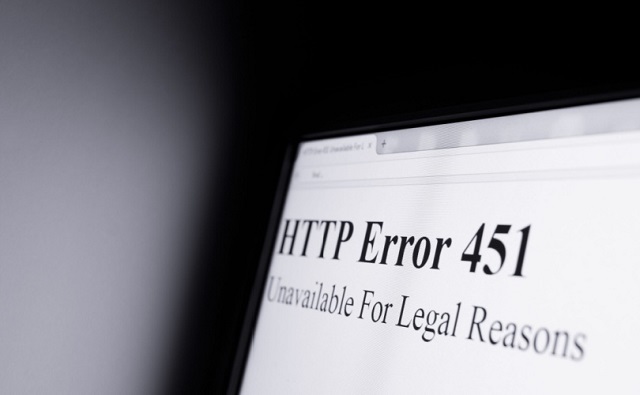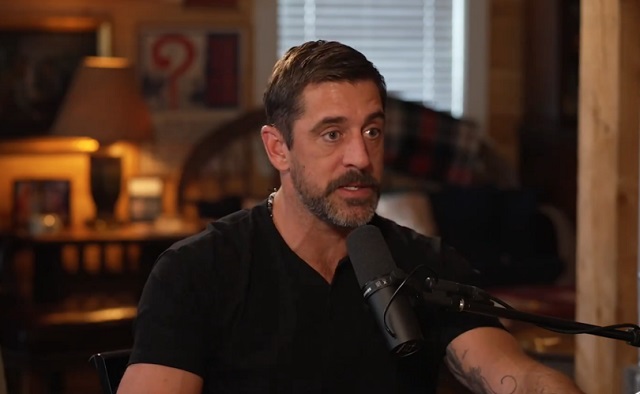Economy
Ruthless, reckless, damaging: the Hon. Steven Guilbeault is MLI’s Policy-maker of the year
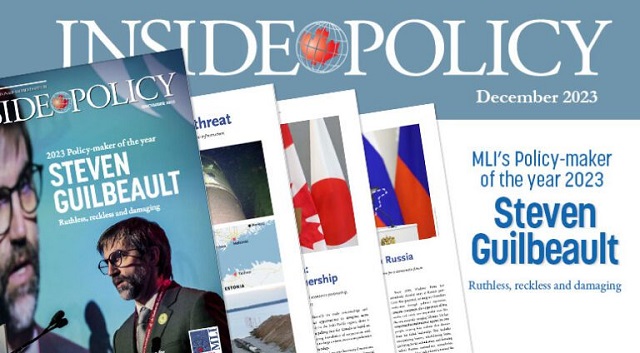
From the MacDonald Laurier Institute
Guilbeault has treated the fact that Canada is a democracy, a market economy, and a federation as inconveniences to be overcome.
The Liberals have been chided for focusing on communications over substance, for announcing policies rather than implementing them. But there is an exception to this rule: the ruthlessly efficient Environment Minister Steven Guilbeault. No one else in Canada has been as influential, and, in my view, no one else has done so much damage.
From an emissions cap to toxic plastic straws, and from Clean Electricity Regulations to the Clean Fuel Standard, Guilbeault has been advancing economy-killing and constitution-defying laws at a frenzied pace.
He was appointed Minister of Environment and Climate Change Canada in October 2021. At the time of his appointment, Guilbeault appeared as the perfect villain: a caricature of the West-hating, anti-oil Liberal that has confounded the aspirations of Canadians west of the Laurentian corridor for decades. In the last two years he has disappointed few of his supporters and assuaged none of his critics’ fears.
Dubbed the “Green Jesus of Montreal” by La Presse, the 2001 image of Guilbeault being walked off in handcuffs in his faux orange prison jumpsuit emblazoned with the Greenpeace logo, following a CN Tower-scaling stunt to bring attention to climate change, features frequently in the social media accounts of his more outspoken critics.
The Canadian oil and gas sector has had a rough decade – from the shale revolution that flooded North America with cheap oil, to the COVID-19 pandemic – but it persisted. The sector achieved record breaking production, and royalties for governments, last year. The coming-into-service of TMX and CGL pipelines promises to grant additional export capacity for Canadian hydrocarbons.
But, like the final boss of a video game, Guilbeault is proving to be a formidable challenger to the country’s most important economic sector, even as the country struggles under declining productivity, persistent inflation and an affordability crisis. What Texas, Putin and OPEC could not undermine, Guilbeault is poised to do. This is intended as criticism but I expect Guilbeault would be pleased with the acknowledgment.
In this year alone he has advanced four sector-destroying policies, as part of the federal government’s much derided “pancake” approach to climate policy: stacking increasingly suffocating and incompatible regulations on Canadian industry to meet our Paris Accord commitments.
Carbon pricing schemes have broadly been accepted within heavy industry across Canada, if grudgingly. But with voters unwilling to accept a price per tonne of GHGs high enough to meaningfully address emissions, the Government has had to resort to additional, bespoke, mechanisms.
The Clean Fuel Regulations (CFR) came into effect on July 1, mandating reductions in the carbon intensity of transportation fuels through various methods, such as blending in biofuels. The Parliamentary Budget Officer found that the CFR are broadly regressive, impacting poorer households the most. The four Atlantic Premiers in particular contested the CFR on the grounds they would disproportionately hurt their residents, calling them “unfair and offensive to Atlantic Canadians” and demanding they be delayed. But Guilbeault blamed any price increase on refiners rather than his regulations, saying “there is simply no reason that they need to push costs onto consumers.”
While imploring refiners to decarbonize their product at a loss, Guilbeault also tacked on a ZEV (zero emissions vehicle) mandate to ensure any investments made in clean fuels today would have an ever-shrinking market and timeline to recoup costs. In other words, Guilbeault is asking refiners to invest in cleaner fuels while promising to ban their products before they could make back their money. The final regulations, mandating a 100 percent zero-emission vehicles sales target by 2035, were announced on December 19.
Such a move requires dramatically more capacity in the country’s electricity grid, up to 25% by some estimates. But, unbothered by the laws of physics, Guilbeault went ahead and introduced draft Clean Electricity Regulations (CER) in August. The CER will impose obligations on electricity generation to achieve net zero emissions in the grid by 2035 and will necessarily take large swathes of Canada’s existing generation capacity offline. In practice this means a phase out of coal, which is happening; and natural gas, which cannot realistically happen – particularly in the cold Prairie provinces of Alberta and Saskatchewan where hydroelectric generating capacity is limited, nuclear is years away, and intermittent wind and solar are unsuitable. The CER prompted Alberta Premier Danielle Smith to launch a national ad campaign protesting that “No one wants to freeze in the dark”.
More sober western voices have also warned against the CER. The CEO of SaskPower sent a letter arguing that while the utility was “on track to meet our commitment to reduce GHG emissions by 50 per cent below 2005 levels by 2030”, the CER are “not possible from technological, financial and logistical perspectives.” But Guilbeault has remained adamant that there will be no special carve outs for any province.
The crowning achievement of Guilbeault’s economy-destroying climate policies was announced on December 7: an emissions cap, and cut, on one sector only, Canadian oil and gas. The announcement was not made in downtown Calgary, amongst those most affected, but in Dubai at COP28. Such a cap is counterproductive, expensive, and both economically and politically self-sabotaging. There is no limit to the punishment Guilbeault is willing to impose on the energy sector, regardless of the collateral damage to the rest of the Canadian economy.
Guilbeault’s accomplishments do not end at stymying Canada’s upstream and downstream oil and gas sector. It’s been a fractious time for federal-provincial relations, and a challenging one for the Canadian Constitution. On a list that included Danielle’s Smith’s Alberta Sovereignty Act and Scot Moe’s Saskatchewan First Act; and invocations by Ontario, Quebec, and Saskatchewan of the notwithstanding clause; it was not one, but two of Minister Guilbeault’s laws that were declared unconstitutional by Canadian courts this year.
In the first instance, the Supreme Court of Canada determined the Impact Assessment Act – previously known as Bill C-69, or the No More Pipelines Act – to reach far beyond federal jurisdiction, granting Parliament “a practically untrammeled power to regulate projects qua projects, regardless of whether Parliament has jurisdiction to regulate a given physical activity in its entirety.” The vast majority of sections within the IAA were deemed unconstitutional.
Guilbeault doubled down, saying that the federal government would “course correct”, but that it would be unlikely to change the outcome of the IAA process for projects.
Just one month later, the Federal Court of Canada held that the federal government’s labelling of all Plastic Manufactured Items (PMI) as toxic was both unreasonable and unconstitutional. Again, Guilbeault was undeterred, and announced on December 8 that the federal government would appeal it.
It appears that, in Guilbeault’s view, federalism is an inconvenient and unacceptable barrier to accomplishing meaningful progress on climate change. For an ideologue like Guilbeault, the Constitution was not designed for, and is not up to the task of, addressing the existential threat posed by fossil fuels. But that is no reason not to try. He will continue to seek new avenues to restrain industry and the provinces; he will just have to tighten up the language.
No amount of tweaking will prevent the Clean Electricity Regulations and oil & gas emissions cap from facing challenges from Alberta and Saskatchewan. The federal government will rely on its criminal law power to see them through. He has suggested that violating the Clean Electricity Regulations, for example running coal fired plants beyond 2030, would be an offense under the Criminal Code. The joke in the Prairies is that he wants his western counterparts to have orange jumpsuits that match his own.
Guilbeault is seen as a true believer. His mission is to save the planet from climate change, and to save oil and gas producing apostates from themselves. Nothing will persuade him he should moderate his efforts. But I would be remiss not to point out that Guilbeault has shown the ability to tolerate pragmatism in his own Cabinet.
The first instance was with nuclear energy. Long a lightning rod for 20th century environmentalists, Guilbeault has historically been opposed to nuclear. In the Liberals’ Green Bond Framework, released in March 2022, nuclear energy was excluded alongside sin industries like tobacco & alcohol sales, arms manufacturing, gambling, and fossil fuels. After public opinion evolved, and in the face of successful nuclear refurbishments and new reactor developments in the GTA, the Liberal government reversed its decision. Guilbeault duly ate his humble pie, saying in April 2023 that:
“In the past I haven’t been the person who supported the most the development of nuclear energy. But when you look at what international experts like the International Energy Agency or the IPCC is saying, they’re saying, to prevent global temperatures from reaching 1.5 degrees Celsius, to achieve our carbon neutrality targets, we need this technology.”
This could not have been easy, and I applaud him for evolving his views in line with the evidence.
But he was not convinced enough to directly advocate for nuclear technology at COP28. On December 2, 2023 in Dubai, 22 states including Canada signed a landmark declaration committing to triple nuclear energy by 2050. Minister Guilbeault seemed to be everywhere at COP28; but he was not there for that announcement, missing the traditional ‘family photo’ of world leaders signing the nuclear declaration.
Likewise, Guilbeault had to accept with great reluctance the Liberals’ political gambit of exempting heating oil from carbon pricing. Their coalition must combine urban environmentalists and Atlantic Canadian townsfolk to win the next election. In the case of heating oil, the Atlantic caucus carried the day. But Guilbeault made clear it was a ploy not to be repeated, telling the Canadian Press in an interview on November 6th that he would not stand for any further concessions:
“As long as I’m the environment minister, there will be no more exemptions to carbon pricing…It’s certainly not ideal that we did it and in a perfect world we would not have to do that, but unfortunately we don’t live in a perfect world.”
Guilbeault is a threat to Canada’s prosperity, and to our allies’ too. Germany, Japan, Korea and others have come asking for more energy exports, only to be told there was no business case. The federal government’s own policies are making it so.
But more to the point his climate policies, committed though they may be, are destined to fail.
It is often said that if you want to go fast, go alone; but if you want to go far, go together.
Guilbeault is very far ahead from industry, the provinces, Canadians, and increasingly his own caucus. He is alienating voters who are concerned more about affordability and housing. There will likely be a backlash. As far as Guilbeault has swung the pendulum to the left, it will come swinging back at him and the Liberals the other way. The energy transition is a marathon, and Guilbeault is a sprinter.
One could almost admire Guilbeault’s unwavering commitment to his principles – his willingness to advance his goals in the face of criticism, resistance and alarm. But through his actions, Guilbeault has treated the fact that Canada is a democracy, a market economy, and a federation as inconveniences to be overcome.
Canadians that care about these things will find many reasons to be concerned with Guilbeault’s efforts this year. His impact on the nation’s politics and economy will be felt long after his policies have been overturned.
Heather Exner-Pirot is the director of energy, natural resources, and environment at the Macdonald-Laurier Institute.
Brownstone Institute
Enough With These Dangerous Calculations

From the Brownstone Institute
BY
Now that there is more open talk about vaccine injury, we are continually assured that overall these vaccines were worth it even so. The thought always occurs: it has not been worth it for the injured. Nor is their injury lessened by the knowledge that others were helped, if they were.
What precise metric are we going to use to determine costs and benefits population-wide? Many millions were forced to take experimental injections that they did not want nor need. Many were injured and with no chance of compensation. This is gravely unjust. You don’t need to take recourse to fancy philosophical conjectures (The Trolley Problem, The Lifeboat Dilemma, The Fat Man on the Bridge, etc.) to do the utilitarian calculation.
And yet, such calculations are precisely what the defenders of society-wide pandemic interventions are citing as evidence that we can and should do it again. The costs are high, they now admit, but worth the benefit.
Well, maybe not. It’s hard to say but they will keep working on it. They will decide in due course.
This is the argument of Professor John M. Barry. His book on the 1918 flu pandemic kicked off the entire pandemic-planning industry once George W. Bush read the book flap in 2005. Barry’s new article in the New York Times raises alarms about the Avian Bird Flu, the same as the whole pandemic industry is doing right now, and makes the argument that the interventions last time were just great overall.
“Australia, Germany and Switzerland are among the countries that demonstrated those interventions can succeed,” he claims even though all three countries have been torn apart by the pandemic response that is still rocking politics and showing itself in economic decline “Even the experience of the United States provides overwhelming, if indirect, evidence of the success of those public health measures.”
What is that indirect evidence? This you won’t believe: that flu deaths dramatically fell. “The public health steps taken to slow Covid contributed significantly to this decline, and those same measures no doubt affected Covid as well.”
That’s a heck of a thing. If you burn down the house to kill the rats and fail, but happen to kill the pets, surely you have some bragging rights there.
There is indeed a big debate on why seasonal flu seems to have nearly disappeared during the pandemic. One theory is simple misclassification, that flu was just as present as always but labeled Covid because PCR tests pick up even slight elements of the pathogen and financial incentives drove one to displace the other. There is surely an element of this.
Another theory relates to crowding out: the more serious virus pushes aside the less serious one, which is an empirically testable hypothesis.
A third explanation might in fact be related to interventions. With vast numbers staying home and the banning of gatherings, there was indeed less opportunity for pathogenic spread. Even if granting that is true, the effect is far from perfect, as we know from the failure of every attempt to achieve zero Covid. Antarctica is a good example of that.
That said, and even postulating this might be correct, there is nothing to prevent the spread among the population after opening except with even worse results because immune systems are degraded for lack of exposure.
Barry concedes the point but says “such interventions can achieve two important goals.” The first is “preventing hospitals from being overrun. Achieving this outcome could require a cycle of imposing, lifting and reimposing public health measures to slow the spread of the virus. But the public should accept that because the goal is understandable, narrow and well defined.”
Fine, but there is a major glaring error. Most hospitals in the US were not overrun. There is even a genuine question about whether and to what extent New York City hospitals were overrun but, even if they were, this had nothing to do with hospitals in most of the country. And yet the grand central plan closed them all for diagnostics and elective surgeries. In major parts of the country, parking lots were completely empty and nurses were furloughed in more than 300 hospitals.
Overall, that scheme (and who imposed this?) didn’t work too well.
The second supposed benefit you can predict: shutting down buys time “for identifying, manufacturing and distributing therapeutics and vaccines and for clinicians to learn how to manage care with the resources at hand.” This is another strange statement because authorities actually removed therapeutics from the shelves all over the country even though physicians were prescribing them.
As for the supposed vaccine, it did not stop infection or transmission.
So that scheme didn’t work either. There is also something truly cruel about using compulsory methods to preserve the population’s immunological naïveté in anticipation of a vaccine that may or may not work and may or may not cause more harm than good. And yet that is precisely the plan.
The most alarming part of Barry’s article, even aside from his incorrect claim that masks work, is this statement: “So the question isn’t whether those measures work. They do. It’s whether their benefits outweigh their social and economic costs. This will be a continuing calculation.”
Again we are back to benefit vs costs. It’s one thing for a person confronting a true moral or personal difficulty to make that calculation and live with the consequences. Every philosophical problem listed above – Trolly Cars and Lifeboats – involves personal choices and single decision-makers. In the case of pandemic planning and response, we are talking about groups of intellectuals and bureaucrats making decisions for the whole of society. In the last go-round, they made these decisions for the entire world with catastrophic results.
Many hundreds of years ago and following, the Western mind decided that giving such power to elites was not a good idea. The “continuing calculation” about what costs and benefits are experienced by billions of people from compulsory impositions is not something we should risk, not even with AI (which Barry says will solve the problems next time). Instead, we generally decided that a presumption of freedom is a better idea than empowering a small elite of scientists with the power to make “continuing calculations” for our supposed benefit.
Among many problems with the scientistic scheme for elite rule in the realm of infectious disease is that the population as a whole has no way to evaluate schemes and claims made to them by the government itself. They told us terrible population-wide death would come from Covid but it turned out to be exactly what others said back in February 2020; a disease impactful mainly on the aged and infirm.
Similarly, with the bird flu, we’ve been through a quarter century of claims that half of humanity could die from it. So far, every jump from animals to humans has resulted in reparable maladies like conjunctivitis.
But let’s say the bird flu really does get bad. Should the scientists who ruled us last time be trusted to do it again? That’s Barry’s plea: he demands “trust in government.” At the same time, he wants government to have the power to censor dissent. He falsely claims that last time, “there was no organized effort to counter social media disinformation” despite vast evidence of exactly this.
More information is actually what we need, especially from dissidents. For example, Barry celebrates that dexamethasone worked against Covid. But he fails to point out that the “experts” said in February 2020 that dexamethasone should not be used. Indeed, if you followed the Lancet, you would not have used them at all. In other words, Barry’s article refutes itself simply by showing the experts were desperately wrong in this case.
And, honestly, he knows this. Every bit of it. I have no doubt that if we met for cocktails, he would agree with most of this article. But he would also quickly point out that, after all, the New York Times commissioned the article so he can only say so much. He is merely being strategic, don’t you know?
This is the problem we face today with nearly all ruling-class intellectuals. We don’t actually disagree that much on the facts. We disagree on how much of the facts we are in a position to admit. And this puts Brownstone in a very awkward position of being a venue to say publicly what most people in the know say only privately. We do it because we believe in doing so.
All of which underscores the more general point: government and its connected scientists simply cannot be trusted with this kind of power. The last experience illustrates why. We forged our societies to have laws and guaranteed liberties that can never be taken away, not even during a pandemic. It is never worth using the power of the state to ruin lives to fulfill anyone’s abstract vision of what constitutes the greater good.
Economy
Prime minister’s misleading capital gains video misses the point
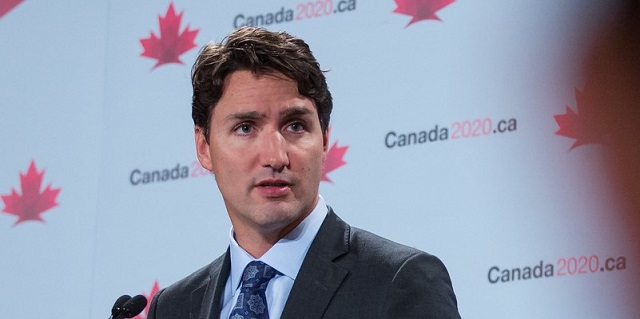
From the Fraser Institute
By Jake Fuss and Alex Whalen
According to a 2021 study published by the Fraser Institute, 38.4 per cent of those who paid capital gains taxes in Canada earned less than $100,000 per year, and 18.3 per cent earned less than $50,000. Yet in his video, Prime Minister Trudeau claims that his capital gains tax hike will affect only the richest “0.13 per cent of Canadians”
This week, Prime Minister Trudeau released a video about his government’s decision to increase capital gains taxes. Unfortunately, he made several misleading claims while failing to acknowledge the harmful effects this tax increase will have on a broad swath of Canadians.
Right now, individuals and businesses who sell capital assets pay taxes on 50 per cent of the gain (based on their full marginal rate). Beginning on June 25, however, the Trudeau government will increase that share to 66.7 per cent for capital gains above $250,000. People with gains above that amount will again pay their full marginal rate, but now on two-thirds of the gain.
In the video, which you can view online, the prime minister claims that this tax increase will affect only the “very richest” people in Canada and will generate significant new revenue—$20 billion, according to him—to pay for social programs. But economic research and data on capital gains taxes reveal a different picture.
For starters, it simply isn’t true that capital gains taxes only affect the wealthy. Many Canadians who incur capital gains taxes, such as small business owners, may only do so once in their lifetimes.
For example, a plumber who makes $90,000 annually may choose to sell his business for $500,000 at retirement. In that year, the plumber’s income is exaggerated because it includes the capital gain rather than only his normal income. In fact, according to a 2021 study published by the Fraser Institute, 38.4 per cent of those who paid capital gains taxes in Canada earned less than $100,000 per year, and 18.3 per cent earned less than $50,000. Yet in his video, Prime Minister Trudeau claims that his capital gains tax hike will affect only the richest “0.13 per cent of Canadians” with an “average income of $1.4 million a year.”
But this is a misleading statement. Why? Because it creates a distorted view of who will pay these capital gains taxes. Many Canadians with modest annual incomes own businesses, second homes or stocks and could end up paying these higher taxes following a onetime sale where the appreciation of their asset equals at least $250,000.
Moreover, economic research finds that capital taxes remain among the most economically damaging forms of taxation precisely because they reduce the incentive to innovate and invest. By increasing them the government will deter investment in Canada and chase away capital at a time when we badly need it. Business investment, which is crucial to boost living standards and incomes for Canadians, is collapsing in Canada. This tax hike will make a bad economic situation worse.
Finally, as noted, in the video the prime minister claims that this tax increase will generate “almost $20 billion in new revenue.” But investors do not incur capital gains taxes until they sell an asset and realize a gain. A higher capital gains tax rate gives them an incentive to hold onto their investments, perhaps until the rate is reduced after a change in government. According to economists, this “lock-in” effect can stifle economic activity. The Trudeau government likely bases its “$20 billion” number on an assumption that investors will sell their assets sooner rather than later—perhaps before June 25, to take advantage of the old inclusion rate before it disappears (although because the government has not revealed exactly how the new rate will apply that seems less likely). Of course, if revenue from the tax hike does turn out to be less than anticipated, the government will incur larger budget deficits than planned and plunge us further into debt.
Contrary to Prime Minister Trudeau’s claims, raising capital gains taxes will not improve fairness. It’s bad for investment, the economy and the living standards of Canadians.
Authors:
-

 Opinion2 days ago
Opinion2 days agoUK set to ban sex ed for young children amid parental backlash against LGBT indoctrination
-

 Censorship Industrial Complex2 days ago
Censorship Industrial Complex2 days agoAustralia passes digital ID bill, raising fears of government surveillance without accountability
-
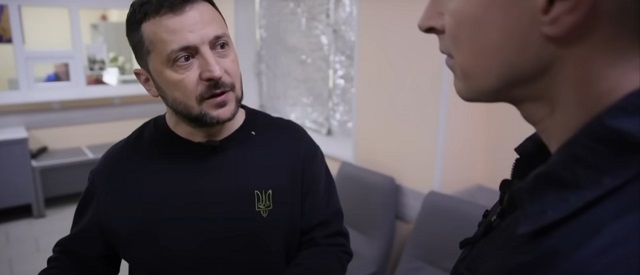
 conflict13 hours ago
conflict13 hours ago‘What’s The Problem?’: Zelenskyy Says NATO Needs To ‘Shoot Down’ Russian Missiles In Ukraine’s Airspace
-

 DEI1 day ago
DEI1 day agoLawmakers press investigation into DEI agenda at the Pentagon
-

 International2 days ago
International2 days agoIran’s President Ebrahim Raisi, who oversaw mass executions, dies in helicopter crash
-
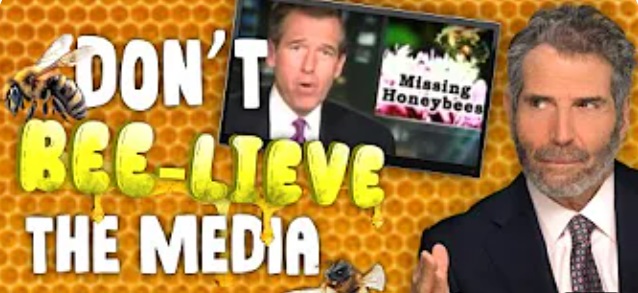
 Food1 day ago
Food1 day agoThe Bee-pocalypse: Another Scare Story the Media Got Wrong
-
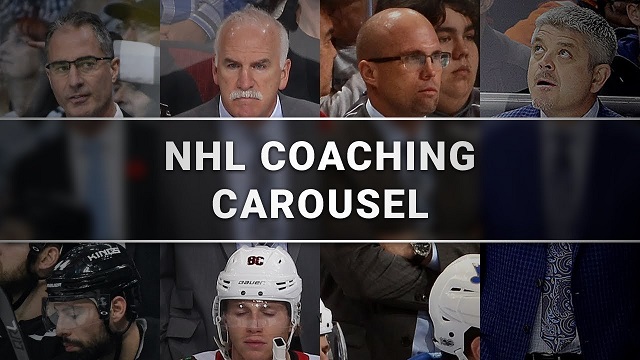
 Bruce Dowbiggin2 days ago
Bruce Dowbiggin2 days agoLather, Rinse, Repeat: Recycling Coaches In The NHL
-
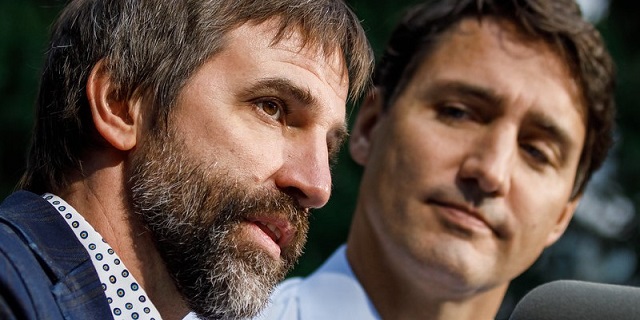
 Alberta1 day ago
Alberta1 day agoFree Alberta Strategy petition demanding PM Trudeau fire Steven Guilbeault passes 13,000 signatures








